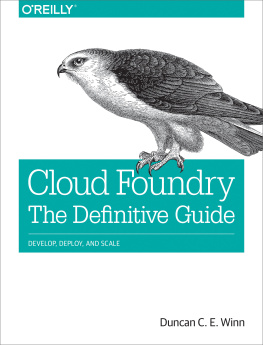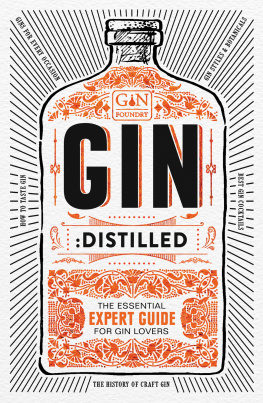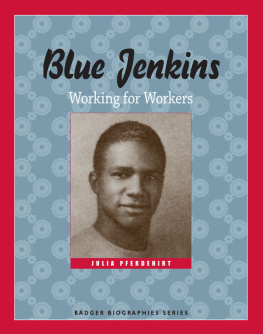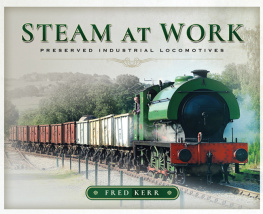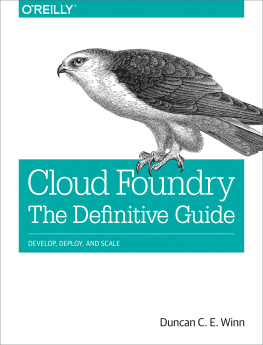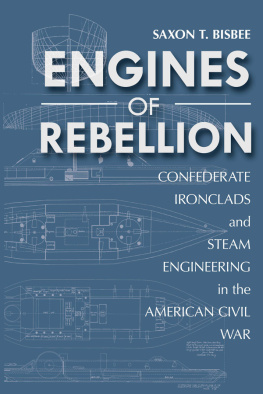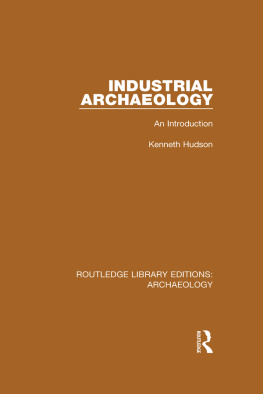
IMAGES
of America
WEST POINT
FOUNDRY

The West Point Foundry was located on the east bank (right) of the Hudson River on the sharply pointed cove just below Cold Spring in the Hudson Highlands, about 40 miles from the most northern part of New York City. This detail is from Map of Putnam County New-York, Surveyed and Published by R.F. OConnor (1854). (Putnam History Museum.)
ON THE COVER: On May 1, 1864, a West Point Foundry crew is preparing to prove a 300-pounder Parrott rifled cannon aimed at a Crows Nest Mountain target on the western side of the Hudson River. Due to their size, few 300-pounders were made, and their use was limited. Parrott cannons of other sizes, both in field and in siege classes, saw widespread use during the American Civil War. (Putnam History Museum.)
IMAGES
of America
WEST POINT
FOUNDRY
Trudie A. Grace and Mark Forlow

Copyright 2014 by Trudie A. Grace and Mark Forlow
ISBN 978-1-4671-2064-7
Ebook ISBN 9781439644539
Published by Arcadia Publishing
Charleston, South Carolina
Library of Congress Control Number: 2013939423
For all general information, please contact Arcadia Publishing:
Telephone 843-853-2070
Fax 843-853-0044
E-mail
For customer service and orders:
Toll-Free 1-888-313-2665
Visit us on the Internet at www.arcadiapublishing.com
In memory of those who lost their lives on both sides of combat during the American Civil War.
CONTENTS
ACKNOWLEDGMENTS
We are grateful to the many people who, as individuals or as staff members of organizations and institutions, provided information and visual material to us for this study of the West Point Foundry. Of special note is the Putnam History Museum (PHM), formerly the Putnam Historical Society and Foundry School Museum. The museum contributed more than half the images from its extensive West Point Foundry collection.
We appreciate the special insight and photographs that we received from the following people with direct involvement with the foundrys history: Jan Thacher has extensively photographed the foundrys site and worked for years with the PHMs photography collection; Eric Lind, director of the Constitution Marsh Audubon Center and Sanctuary, helped to clarify the US Environmental Protection Agencys cleanup of Foundry Cove and adjacent areas; Stephen Tilly and staff, who directed the stabilization of the 1865 office building on the foundry site, were also graciously helpful; as was Andrew H. Cornell, a descendent of Cornell family members who once owned the foundry.
Staff members at the United States Military Academy at West Point facilitated our research, including David Reel, director of the West Point Museum. Les Jensen, curator of arms and armor, spent hours showing us ordnance. Suzanne Christoff and Susan Lindelmann of the USMA Library Special Collections and Archives provided access to an extensive photography collection from the Civil War era.
For helping us with research and facilitating the use of images, we thank Lisa Nolan, board president of the Society of the Block Island Light; David S. Krop and Claudia Jew, the Mariners Museum, The Monitor Center; Peter Harrington, curator Anne S.K. Brown Military Collection, Brown University Library; Judy Bolton, Louisiana State University Libraries; Scott Price, the US Coast Guard History Program; Katalina Puig, Para la Naturaleza, a unit of the Conservation Trust of Puerto Rico; and staff of Columbia Universitys Rare Books & Manuscript Library and Ambrose Monell Library for engineering. We also greatly appreciate images and information about Civil War artillery given by Bernie Paulson from Paulson Brothers Ordnance Corp. and Jack Melton of www.civilwarartillery.com.
The PHMs librarians, Lillian McGinnis and Corinne Giunta, were their usual helpful selves as was Josephine Doherty, a longtime local historian. Mindy Krazmien, director of the PHM, supported and facilitated our work. Linda Faulhaber, our editor, was our mainstay in final editing before manuscript submission.
The images in this volume from the Putnam History Museum are credited, after , as follows: (PHM.).
An asterisk in a credit line indicates a lengthy credit, given here: *Thomas Kelah Wharton diaries and sketchbook, Manuscripts and Archives Division, The New York Public Library, Astor, Lenox and Tilden Foundations ().
INTRODUCTION
The West Point Foundry (WPF) in Cold Spring, New York, in the Hudson Highlands, was established in 1817 as a cannon foundry and was one of the first major industrial sites in the United States. It played a central role in the nations industrial development, most significantly in the manufacture of artillery and other ordnance but also in the production of many other iron products.
During the War of 1812, several foundries manufactured ordnance for the US government. Efforts were not well organized, nor was production regulated. A British raid on the Principio Iron Works near Havre de Grace, Maryland, in May 1813, underscored the need for coordinated manufacturing of cannons for national defense. In the aftermath of the war, Pres. James Madison called for increased production of ordnance to ensure the nations security. Three established foundries became new producers of ordnance for the government under military oversight: the Fort Pitt Foundry (1804) in Pittsburgh; the Columbia Foundry, a reworking of Henry Foxalls foundry (1800) in Georgetown; and the Bellona Foundry (1810) near Richmond, Virginia. A fourth cannon-making foundry, the only such private enterprise established after the war, was the WPF, located diagonally across the Hudson River from the United States Military Academy at West Point (USMA, 1802). The site for the new foundry, near what became the village of Cold Spring, was selected for several reasons. Not only was its location a secure one with access to a major waterway, but the area was also rich in the natural resources needed for the successful operation of a foundryiron ore, wood for fuel and charcoal production, and flowing water for powering machinery.
The foundry was established by members of the West Point Foundry Association, incorporated in 1818, a group of socially and professionally accomplished entrepreneurs led by Gouverneur Kemble (), then West Points inspector of ordnance, and appointed him the foundrys superintendent.
Early on, the WPF primarily turned out ordnance for the military, including various types of cannons, howitzers, mortars, and projectiles. Initial foundry contracts for smoothbore cannons came from the Navy for arming warships and for seacoast cannons, the latter for Army shore batteries. Production soon expanded to other important iron products, including the first American locomotives; marine engines and boilers, both for passenger steamers and for some of the first steam frigates; the first American iron-hulled ship; aqueduct pipes; and the engine and pumps for the US Naval Dry Dock at the New York Navy Yard (later named the Brooklyn Navy Yard). The largest Cornish steam engine in the United States was built by the foundry and delivered to the Jersey City Water Works in Bellville, New Jersey, in 1853. The foundrys market was also international. Beam engines and cane mills were ordered for Caribbean sugarcane plantations. An order came from the Egyptian government for a machine to separate hulls from cottonseed; it was shipped from New York City in 1838.
Next page

